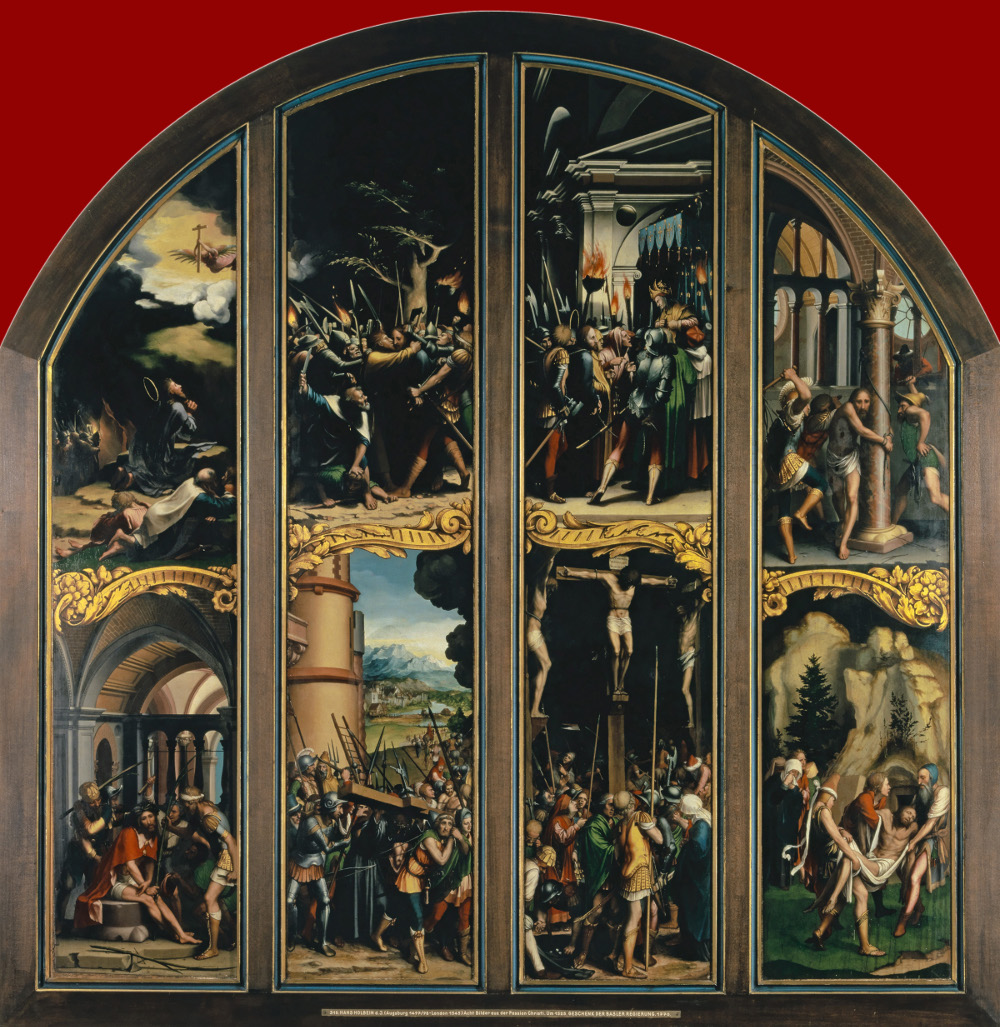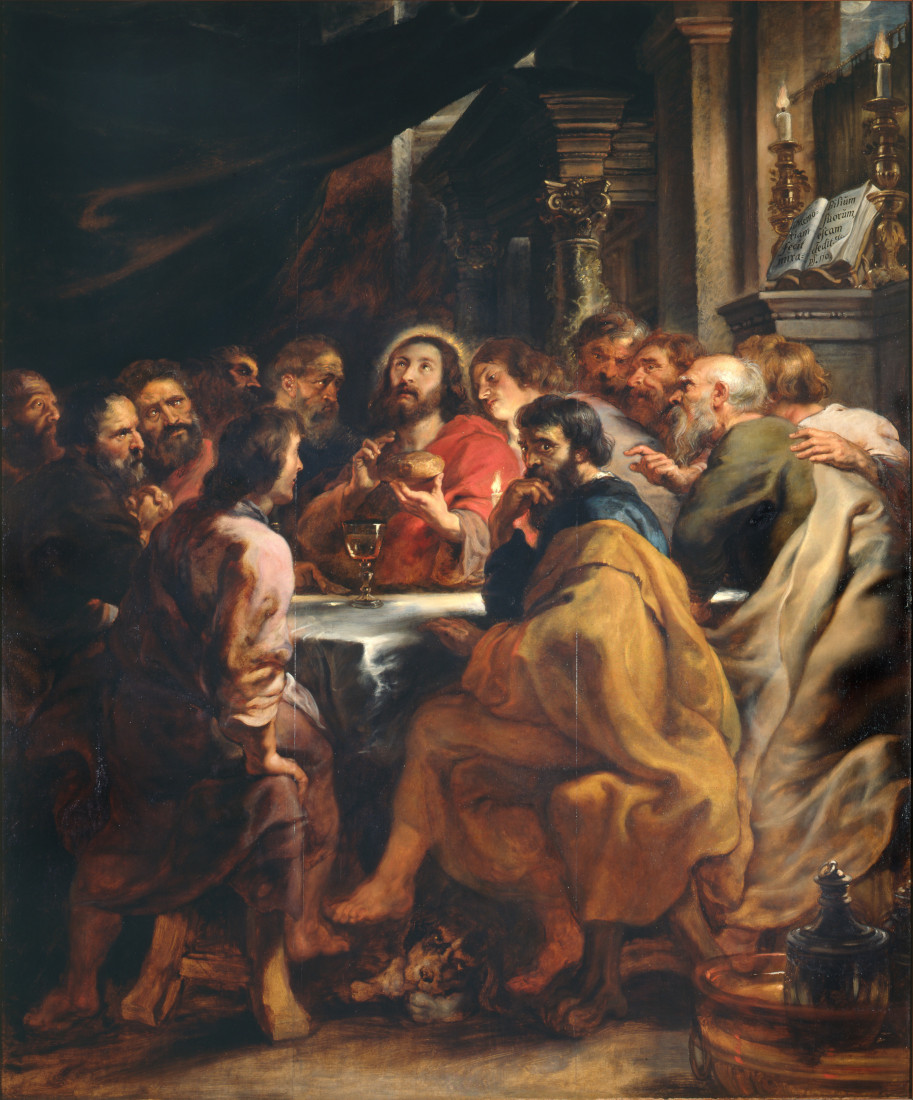Hans Holbein the Younger 1497/8–1543
The Passion of Christ (Luke 22-23)

Four panels depicting scenes from the Passion.
(from Art and the Bible)
Top row, from left to right: on the Mount of Olives, the Arrest in the Garden, Before Caiaphas, and the Scourging.
Bottom row, from left to right: the Crowning with Thorns, the Via Crucis, the Crucifixion, and the Entombment.
Peter Paul Rubens 1577–1640
The Last Supper

Then came the day of Unleavened Bread on which the Passover lamb had to be sacrificed. Jesus sent Peter and John, saying, "Go and make preparations for us to eat the Passover."
"Where do you want us to prepare for it?" they asked.
He replied, "As you enter the city, a man carrying a jar of water will meet you. Follow him to the house that he enters, and say to the owner of the house, 'The Teacher asks: Where is the guest room, where I may eat the Passover with my disciples?' He will show you a large upper room, all furnished. Make preparations there."
They left and found things just as Jesus had told them. So they prepared the Passover.
When the hour came, Jesus and his apostles reclined at the table. And he said to them, "I have eagerly desired to eat this Passover with you before I suffer. For I tell you, I will not eat it again until it finds fulfillment in the kingdom of God."
After taking the cup, he gave thanks and said, "Take this and divide it among you. For I tell you I will not drink again of the fruit of the vine until the kingdom of God comes."
And he took bread, gave thanks and broke it, and gave it to them, saying, "This is my body given for you; do this in remembrance of me."
In the same way, after the supper he took the cup, saying, "This cup is the new covenant in my blood, which is poured out for you. (Luke 22:7-20)
This is one of Rubens's versions of the Last Supper. It shows Judas looking away, absent-mindedly, as the others are shocked to learn about the pending betrayal.Duccio di Buoninsegna ca. 1255–1319
The painting was originally an altar-piece in the Saint Rombout Church in Mechelen. Two pre-studies are known—one in Moscow, the other in a private collection. (from Art and the Bible)
Prayer on the Mount of Olives (Luke 22:39)

Jesus went out as usual to the Mount of Olives, and his disciples followed him. On reaching the place, he said to them, "Pray that you will not fall into temptation." He withdrew about a stone's throw beyond them, knelt down and prayed, "Father, if you are willing, take this cup from me; yet not my will, but yours be done." An angel from heaven appeared to him and strengthened him. And being in anguish, he prayed more earnestly, and his sweat was like drops of blood falling to the ground.
When he rose from prayer and went back to the disciples, he found them asleep, exhausted from sorrow. "Why are you sleeping?" he asked them. "Get up and pray so that you will not fall into temptation." (Luke 22:39-46)
Caravaggio 1573–1610
The Betrayal of Christ (Luke 22:48)

While he was still speaking a crowd came up, and the man who was called Judas, one of the Twelve, was leading them. He approached Jesus to kiss him, but Jesus asked him, "Judas, are you betraying the Son of Man with a kiss?" (Luke 22:48)
Jesus' faces expresses both resignation and pain. He knows what is about to happen to him. Judas kisses him so that the soldiers can be sure who they are supposed to capture.
The man holding the light is Caravaggio himself. He made this painting for Ciriaco Mattei, a brother of his then patron, Cardinal Mattei. It was rediscovered in 1990, in a Jesuit convent in Dublin. (from Art and the Bible)
No comments:
Post a Comment